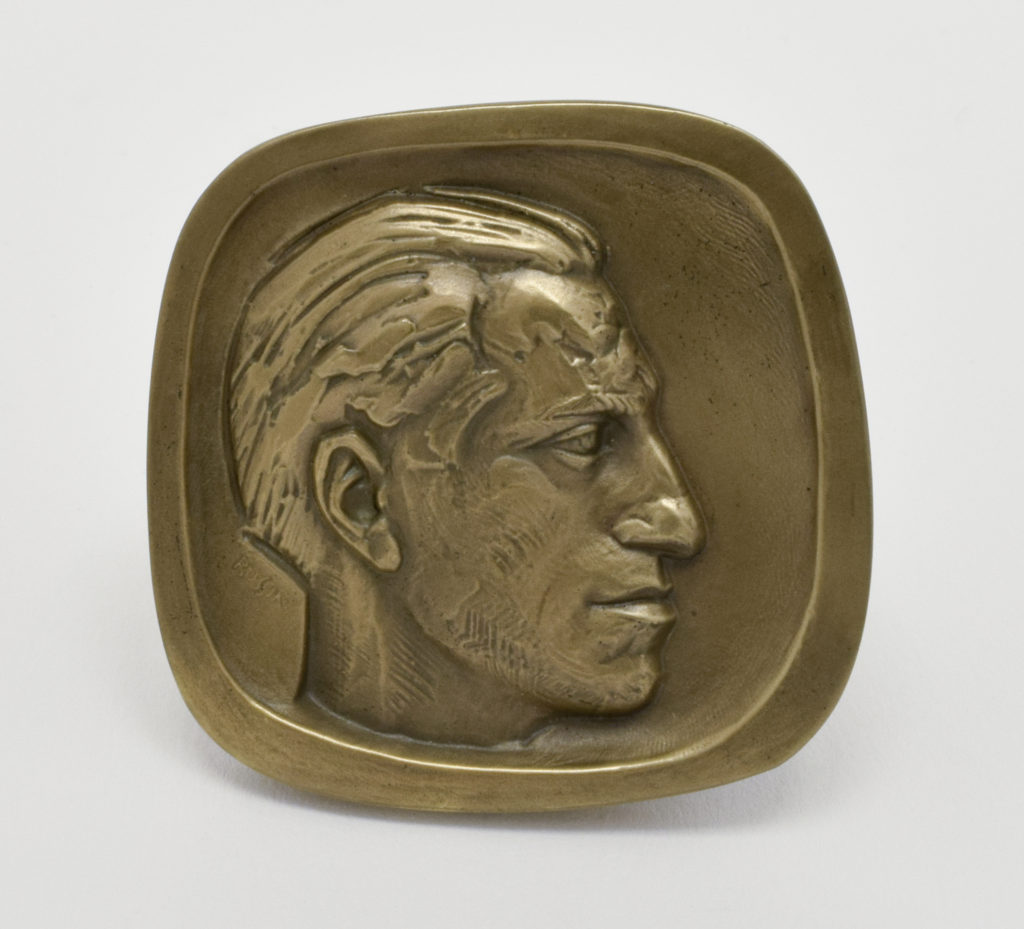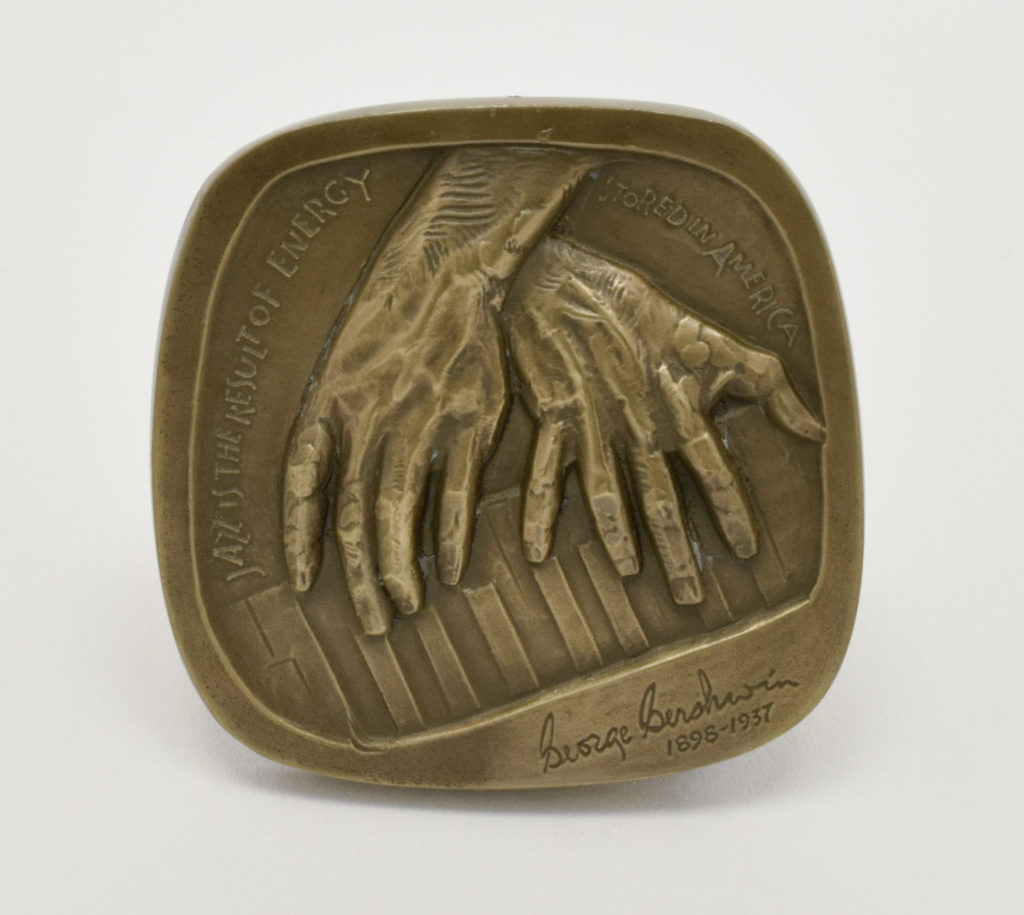George Gershwin (1898-1937)
Robert Russin (New York, NY 1914-Los Angeles, CA 2007)
USA, 1972
Bronze, h. 1 ¾ x w. 1 ¾ in.
Cincinnati Skirball Museum, Jewish-American Hall of Fame Collection, gift of Mel and Esther Wacks, Debra Wacks, and Shari Wacks, 2019.7.7-8
Growing up on the Lower East Side of New York, young George Gershwin had no interest in music until a young violinist, Max Rosen, played at George’s school. He later wrote: “It was, to me, a flashing revelation of beauty.” Max opened the world of music to George, and George taught Max wrestling. Gershwin wrote his first songs while working as a pianist with a music publishing firm. His first revue Half Past Eight opened in 1918. He was equally at home writing “pop” tunes, such as Swanee, The Man I Love, ’S Wonderful, and I Got Rhythm; musical comedies like Oh Kay, Girl Crazy, and Of Thee I Sing; symphonic music Rhapsody in Blue, Concerto in F, and An American in Paris; and he was a pioneer in creating a genuine American folk opera, Porgy and Bess. Most of the lyrics for his revues and songs were written by his brother Ira (1896–1983). Rhapsody in Blue, commissioned by Paul Whiteman as a “jazz symphony,” made jazz respectable for the American concert stage after it was performed in New York in 1924, and it made Gershwin famous. In less than two decades of productivity, George Gershwin left an indelible impression upon American culture.


